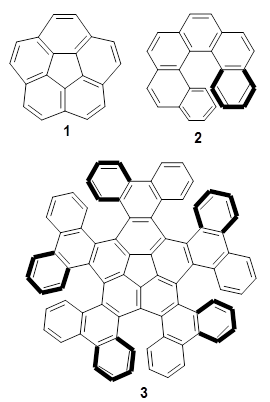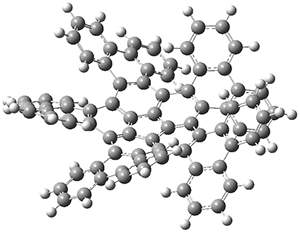Highlighted by Jan Jensen
A MCTS starts by evaluating a number of possible SMILES strings randomly and then assigning likelihood scores to the early parts of the string depending on whether the encoded molecule has a desired property or not. The process is then repeated except that the early parts of the SMILES string is chosen based on likelihood scores, which are continuously updated and added to unscored characters. The changing likelihood scores means that the search for new SMILES strings is directed towards the more promising areas of the tree. I have given a short illustration of the process here. The process is repeated for a given number of steps and the SMILES strings with properties closest to the target are selected.
Figure 1 from the paper. Reproduced under the CC-BY-NC-ND license
Sumita and co-workers combine Monte Carlo tree search (MCTS) and a recurrent neural network (RNN) to discover molecules with specific excitation levels. The general approach is very similar to the one used by Segler, Waller, and co-workers to predict retrosynthetic pathways, that I highlighted last month.
At the core of the method (called ChemTS) is a RNN trained to generate SMILES string representations of molecules - another approach pioneered by Segler and Waller. Trained on thousands of valid SMILES strings, the RNN predicts that, for example, a likely next character in the SMILES string "c1ccccc" is "1" (to form benzene), just like an RNN trained on thousands of English words would predict that a likely next character in "chemistr" is "y".
Since there is more than one probable choice for each new character the number of possible SMILES strings quickly become unmanageable: even five possible characters for each position in a 20-character SMILES string results in $10^{14}$ possibilities. This is where MCTS is helpful (paraphrased from my previous highlight):
The desired property is a certain value of the molecules lowest excitation level (200, 300, 400, 500, or 600 nm), which is predicted using TDFT at the B3LYP/3-21G* level of theory. For example, given two days of CPU time on 12 cores, ChemTS generated 646 possible molecules of which 34 has a predicted excitation energy within 20 nm of 200 nm. Two of these molecules where tested experimentally and one molecule did indeed have an excitation energy in the desired range.





